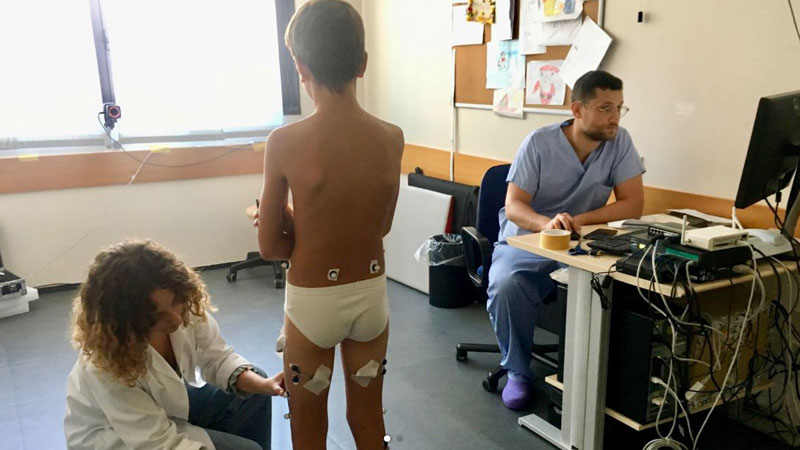Cerebral Palsy Scientific Research – The Activities of Fondazione Ariel in 2019
Cerebral Palsy Scientific Research – The Activities of Fondazione Ariel in 2019
Regarding Cerebral Palsy Scientific Research, in 2019, one of the research projects funded by Fondazione Ariel was the study of gene expression profile in proteins of spastic tendons and muscles of patients with cerebral palsy (CP) compared to the ones of healthy subjects in their developmental age.
This study was carried out with the contribution of the University of Milan – Department of Biosciences – and Humanitas Research Hospital – Institute of Genetic and Biomedical Research (IRGB).
The condition of spasticity associated with cerebral palsy can be considered as a chronic overload of the locomotor system, in particular of tendons. Therefore, we analyzed the possibility that the altered functional status found in children with CP could lead to a response of rearrangement and/or adaptation by the tissues/cells of the tendon.
In particular, we evaluated the levels of protein expression by comparing quantitatively the proteome (i.e. the set of proteins in a tissue) of tendons in children with cerebral palsy and in healthy children. Portions of tendons from the two categories have been processed to obtain protein extracts that could be expressed by two-dimensional electrophoresis (2D). This method allows to separate and distinguish simultaneously hundreds of proteins in a tissue through a double separation (according to isoelectric point and molecular mass).
Last year we completed the collection of biological material from tendon and muscle biopsies of CP patients (diplegics, having already reached the minimum number of samples from tetraplegic patients) and healthy individuals of the same age for the analysis of gene expression, who already had to undergo surgery for different reasons. All the samples collected were sent to the Department of Biosciences for the processing phase of the samples.
The preliminary results of this research have already highlighted qualitative and quantitative differences of many proteins. These results prove that tendons and muscles subjected to stress due to spasticity alter their properties since the beginning, becoming more rigid and resistant to the increased mechanical stress. In the future, the quantification of all the types of proteins will allow us to determine new therapeutic possibilities – perhaps with genetic recombinants that could change the protein morphology, making them closer to normal ones.
We’re taking this opportunity to recall the other scientific research projects carried out so far by Fondazione Ariel. For more information on the research activities of Prof Portinaro, please refer to these previous articles:

